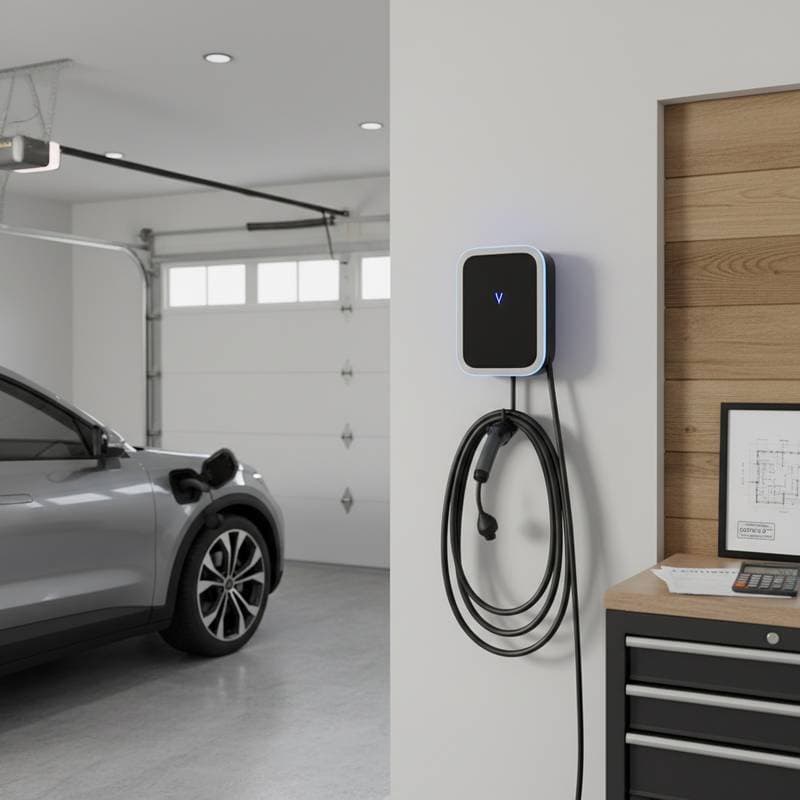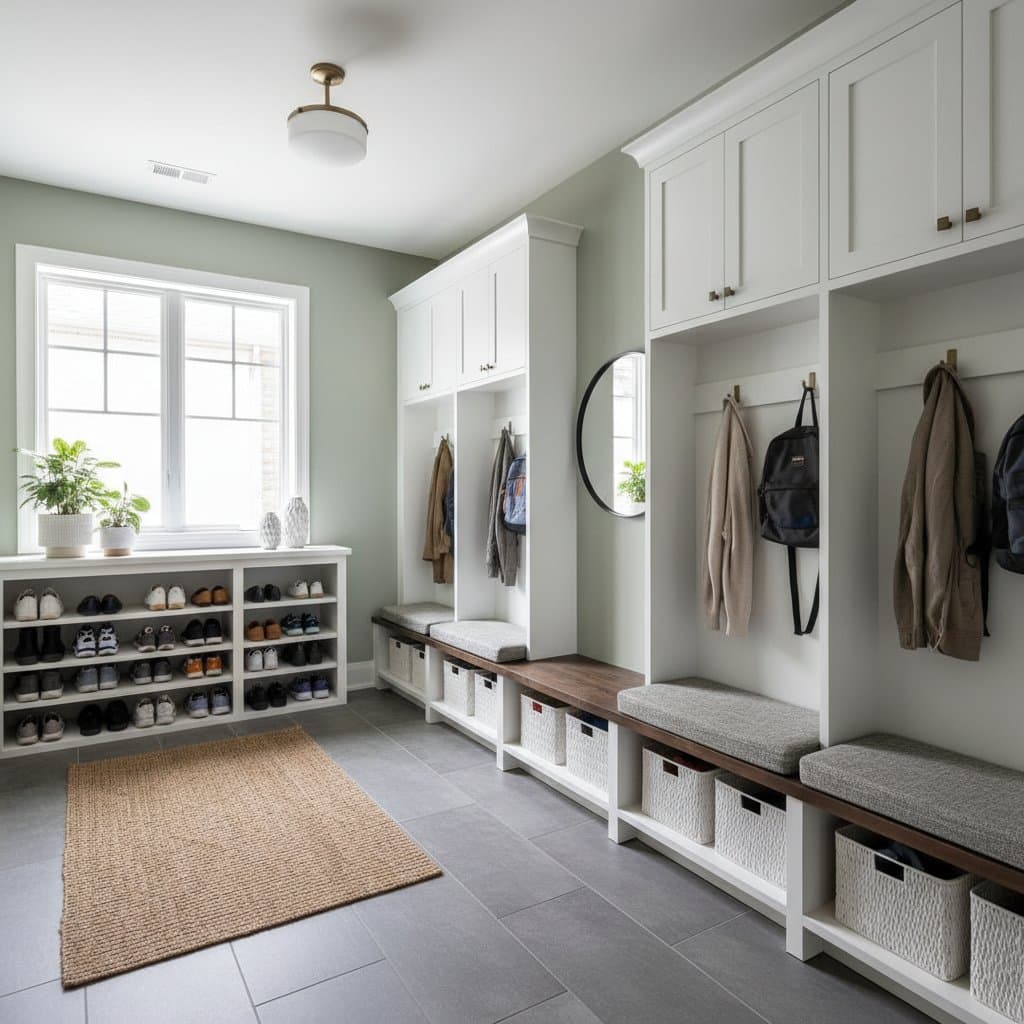EV-Charged Mudrooms: A 15 Percent Home Value Increase by 2025
Integrating an electric vehicle charging station into a mudroom represents a strategic renovation choice. Homeowners appreciate the added convenience and potential for enhanced resale value. In numerous markets, this combined space can elevate property worth by as much as 15 percent. Such setups work well in residences featuring attached garages, side entrances, or utility areas suitable for minor modifications.
This configuration appeals to current electric vehicle owners or those anticipating a purchase. It also attracts prospective buyers seeking pre-installed infrastructure to avoid subsequent modifications. The design proves particularly useful in properties with separate garages or narrow driveways, where external charging poses security concerns.
Advantages and Disadvantages
Advantages
- Enhances resale value and broadens market appeal through tangible upgrades
- Streamlines daily charging routines while prioritizing safety
- Prevents mud, cables, and moisture from entering primary living spaces
- Serves dual purposes as an efficient entry point and storage area
- Minimizes exposure to harsh weather conditions during charging in inclement climates
Disadvantages
- Involves greater initial expenses compared to garage-exclusive installations
- Demands sufficient airflow and electrical infrastructure
- Often necessitates obtaining permits and undergoing inspections
- Poses challenges in compact residences or condominium units
- May not appeal equally to all potential buyers prioritizing indoor charging
Installation: DIY or Professional Approach
Mounting a charger in a mudroom ranges from moderate to challenging in complexity. Anticipate 6 to 12 hours of effort, encompassing electrical and woodworking elements.
DIY Considerations
Suitable tasks include incorporating storage solutions, laying flooring, or applying finishes. Delegate all electrical components to a certified electrician. Gather essential power tools, protective conduit, and personal safety equipment beforehand.
When to Engage Professionals
Opt for expert assistance if the electrical panel lacks capacity or requires modernization. Professionals handle 240-volt circuit installations or panel enhancements. They navigate shared spaces involving plumbing or heating systems. Adhere to local regulations mandating oversight or approvals.
Professional involvement mitigates risks of electrical overloads or inspection failures.
Essential Installation Steps
- Evaluate the area for outlet proximity, airflow, and unobstructed access.
- Design the arrangement, designating spots for the charger, shelves, and seating.
- Consult an electrician to review and install necessary circuits.
- Apply durable wall coverings, such as water-resistant drywall or paneling.
- Affix the charger following manufacturer guidelines for positioning and elevation.
- Lay protective flooring options like sealed tiles, resilient vinyl, or epoxy coatings for straightforward maintenance.
- Incorporate organizational features, including hooks, compartments, or cabinets adjacent to the charging area.
- Apply protective sealants and finishes, utilizing scrub-resistant paint and joint caulking.
- Verify functionality by testing voltage levels, cable extension, and grounding integrity.
Conclude by removing any residue near electrical points and cleaning surfaces prior to operational use.
Upkeep and Durability
Conduct monthly examinations of the charging equipment for accumulations of dust, signs of rust, or cable deterioration. Wipe components with a dry cloth. Ensure ventilation openings remain unobstructed.
Charging units typically endure 8 to 12 years, influenced by manufacturer quality and usage intensity. Accompanying flooring and storage elements withstand 15 to 20 years under regular maintenance.
Refresh tile grout seals periodically every few years. Replace any ventilation filters or fans as needed in equipped mudrooms.
Standard warranties on EV chargers span 3 to 5 years. Confirm compliance with National Electrical Code standards for indoor equipment to uphold coverage.
Comparable Options
Garage Charging Setup
This approach offers lower costs and simpler wiring, though it provides reduced shelter from environmental factors.
Exterior Charging Post
Ideal for driveway access, it requires weatherproof gear and protective enclosures.
Utility Room Integration
Suitable for space-constrained homes, yet it sacrifices everyday accessibility.
Carport Mounting
Presents an economical semi-open solution, lacking enclosed advantages or significant value appreciation.
These options balance ease and expense against protection and usability.
Regional Influences
Variations in labor expenses and weather patterns affect both budgeting and customization.
In colder regions, incorporate insulated barriers and underfloor heating to combat moisture buildup. Coastal locations demand corrosion-resistant materials, including stainless fittings and enclosed receptacles. Urban areas with elevated costs may incur an additional $1,000 for workforce and approvals. Preservation zones often restrict external wiring visibility, requiring specialized permissions.
Verify electrical modification regulations in your jurisdiction. Many municipalities insist on certified professionals and conclusive evaluations prior to activation.
Return on Investment and Market Impact
Appraisers and real estate professionals note potential 15 percent appreciations for properties equipped with integrated EV systems. Prospective purchasers value a tidy, operational entryway that accommodates electric vehicles alongside routine activities.
Appreciation levels hinge on regional demand and upgrade prominence. A polished mudroom featuring concealed charging integration appears more established than a basic garage outlet.
This multifunctional area conveys a progressive, environmentally conscious residence. Such attributes frequently accelerate sales timelines.
Essential Safety Measures
EV chargers consume substantial power. Install on isolated circuits exclusively. Refrain from combining with high-draw household devices.
Position cables away from damp surfaces. Elevate outlets to at least 18 inches from ground level near outer walls.
Extension cords pose hazards under heavy loads due to overheating risks. Discontinue use immediately.
In instances of unusual odors like scorched insulation or irregular illumination, deactivate power at the main panel and summon an electrician.
Secure permits for fresh 240-volt lines. Contact your local authority prior to commencing projects.
Implementing Your Upgrade
An EV-charged mudroom merges functionality with financial benefits. It facilitates sustainable mobility and routine efficiency while bolstering market position.
Initiate by assessing power availability and spatial design. Evaluate charger varieties and complementary finishes aligned with your aesthetic.
Obtain quotes from no fewer than three qualified electricians, plus a contractor for any foundational or aesthetic tasks.
Post-installation, prioritize cleanliness, security, and air circulation. This investment yields enduring usability and appreciation.











